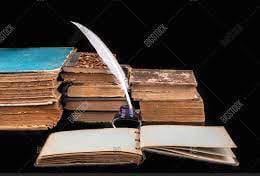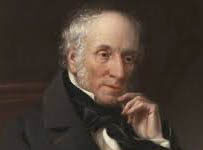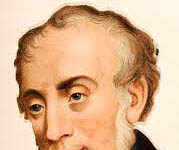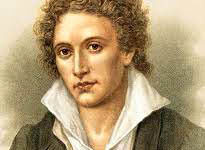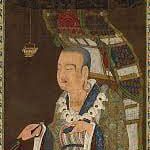The Common Characteristics of Literature
The Common Characteristics of Literature
The Common Characteristics of Literature
Literature, like a mosaic intricately woven from the threads of human creativity, holds a profound and enduring place within the field of human culture. As diverse as the colors streaking a sunrise, literature encompasses an array of forms, genres, and styles that have persisted through the ages. While each literary work possesses its unique charm and essence, there are underlying characteristics that thread them together, transcending time, culture, and language. These shared traits, akin to the constellations forming patterns in the night sky, paint a vivid and unbreakable portrait of literature’s enduring significance in shaping the human experience. The characteristics of literature which are found common to literature created in any age of human civilization, are as follows
Artistic Expression and Creativity: At the heart of literature lies the embodiment of artistic expression and boundless creativity, much like a masterful painter crafting a masterpiece on canvas. It is the stage upon which the artist—the author—employs the vivid palette of language to paint images, evoke emotions, and create worlds that resonate with readers. Just as a sculptor sculpts stone into intricate forms, the writer molds narratives, characters, and settings with the clay of imagination. In J.R.R. Tolkien’s epic saga “The Lord of the Rings,” the intricately depicted landscapes of Middle-earth come alive through the descriptive language, transporting readers to a realm brimming with wonder, adventure, and magic.
Narrative and Storytelling: Literature, akin to a skilled bard recounting age-old tales by a crackling fire, finds its voice through the art of narrative and storytelling. It weaves intricate plots, multifaceted conflicts, and resolutions that draw readers into immersive and captivating imaginary realms. Every literary work is a journey, much like a winding path through a dense forest, leading readers through the lives, trials, and triumphs of characters. In Jane Austen’s beloved novel “Pride and Prejudice,” the art of narrative unveils the complex web of relationships and societal norms in 19th-century England, immersing readers in a timeless exploration of love, social class, and personal growth.
Emotion and Empathy: One of literature’s most enchanting powers is its capacity to evoke emotions and kindle empathy, much like a gentle rain nurturing the garden of human feelings. Through the pages of a book, readers not only witness characters’ joys, sorrows, and struggles but also forge a profound connection, walking in their shoes and understanding their perspectives. Harper Lee’s seminal work “To Kill a Mockingbird” is a prime example of this phenomenon. The narrative’s exploration of racial injustice and moral courage stirs a torrent of emotions, fostering empathy and encouraging readers to critically examine their own biases and beliefs.
Language and Style: The mastery of language and style serves as the cornerstone of literary craftsmanship, much like a virtuoso conductor orchestrating a melodic symphony. Writers deftly wield words, employing metaphors, similes, symbolism, and imagery to craft a multi-dimensional narrative landscape. Their words dance across the pages, forming a captivating rhythm that resonates with readers’ hearts and minds. In F. Scott Fitzgerald’s classic “The Great Gatsby,” the meticulously chosen language and symbolism paint a rich tapestry of the Roaring Twenties, with the green light across the bay serving as a potent symbol of Gatsby’s elusive dreams.
Reflection of Society and Culture: Literature functions as a mirror that reflects the intricacies of society and culture, much like a photograph capturing fleeting moments in the flow of time. It captures the prevailing norms, values, conflicts, and aspirations of its era, offering a unique perspective into the human experience. Charles Dickens’ timeless work “Oliver Twist” serves as a powerful example, shedding light on the harsh realities faced by the underprivileged in 19th-century London. Through vivid characters and poignant narratives, Dickens uncovers societal disparities and engages readers in a thoughtful exploration of justice, compassion, and social change.
Universal Themes and Human Experience: In the vast tapestry of literature, universal themes and shared human experiences are interwoven like constellations in the night sky. These themes transcend cultural boundaries and temporal constraints, resonating with readers across generations and geographical locations. These themes are a testament to the interconnectedness of humanity. Consider William Shakespeare’s immortal tragedy “Romeo and Juliet.” Through its exploration of love, conflict, and fate, the play captures the timeless and universal aspects of the human condition, eliciting emotions and reflections that continue to transcend time.
Entertainment and Enlightenment: Literature serves the dual purpose of entertaining and enlightening, akin to a lantern guiding travelers through the labyrinth of human existence. Through captivating stories and engaging narratives, literature enthralls readers, offering moments of respite, joy, and engagement. Yet, beyond its entertainment value, literature also serves as a vessel of enlightenment, inviting readers to ponder complex questions and explore profound truths. George Orwell’s allegorical masterpiece “Animal Farm” stands as a shining example, entertaining readers with its animal characters while shedding light on the intricate dynamics of power and ideology.
Permanence and Timelessness: Literature’s remarkable ability to transcend time grants it a sense of permanence and timelessness, much like ancient ruins that stand as poignant echoes of bygone civilizations. Literary works from different eras continue to resonate with readers, their themes and insights remaining relevant across centuries. Homer’s epic poem “The Odyssey” serves as an epitome of this enduring quality. Despite its ancient origins, the tale of Odysseus’ arduous journey and his quest for home speaks to the universal themes of heroism, perseverance, and the human spirit.
In the grand tapestry of literature, common characteristics intertwine to form the warp and weft that bind diverse works, cultures, and epochs together. Each literary creation is akin to a unique brushstroke, contributing to the grand canvas of human imagination, expression, and understanding. The artistic expression, storytelling finesse, emotional resonance, language prowess, and timeless themes that literature encapsulates make it a vessel of human experience and a repository of our collective wisdom. Like the stars in the night sky that form constellations guiding wanderers, these shared traits illuminate the human spirit, fostering connection and reflection across time, space, and cultural boundaries. Through these enduring characteristics, literature continues to be a timeless and cherished tapestry woven from the threads of human creativity and insight. 0 0 0. The Common Characteristics of Literature
The Common Characteristics of Literature
N.B. The article ‘The Common Characteristics of Literature’ originally belongs to the book ‘The Origin Evolution & Functions of Literature‘ by Menonim Menonimus. The Common Characteristics of Literature
Books of Literary Criticism by M. Menonimus:
- World Short Story Criticism
- World Poetry Criticism
- World Drama Criticism
- World Novel Criticism
- World Essay Criticism
- Indian English Poetry Criticism
- Indian English Poets and Poetry Chief Features
- Emily Dickinson’s Poetry-A Thematic Study
- Walt Whitman’s Poetry-A Thematic Study
- Critical Essays on English Poetry
- Tawfiq al-Hakim’s Novel: Return of the Spirit-An Analytical Study
- Tawfiq al-Hakim’s Novel: ‘Yawmiyyat Naib Fil Arayaf’-An Analytical Study
- Analytical Studies of Some Arabic Short Stories
- A Brief History of Arabic Literature: Pre-Islamic Period (500 AD-622 AD)
- A Brief History of Arabic Literature: Early Islamic Period (622 AD-661 AD)
- Reviews on William Shakespeare’s Works
- Reviews of Charles Dickens’ Works
- Reviews of John Milton’s Literary Works
- Reviews of Some Iconic Travelogues
- Shakespeare’s Sonnets-Critical Studies
- Analytical Studies of Selected Poems of Sarojini Naidu
- Analytical Studies of Selected Poems of Rabindranath Tagore
- Analytical Studies of Selected Indian English Poems
- Reviews of Selected Motivational Books
- Origin Evolution & Functions of Literature …
Additional Searches::
- The Functions of Literature
- Evolutionary Literary Study
- Functions of Literature
- Principles of Literature
- Literary Theory
- Top 10 Characteristics of Literature
- Literary Genres

